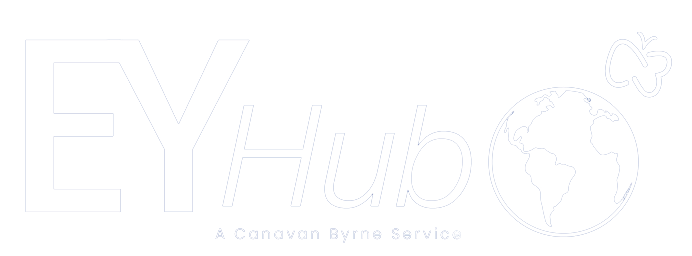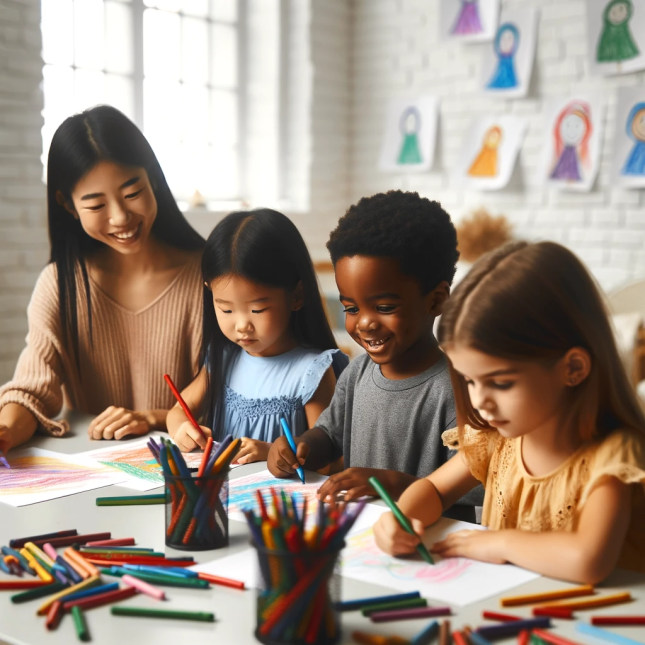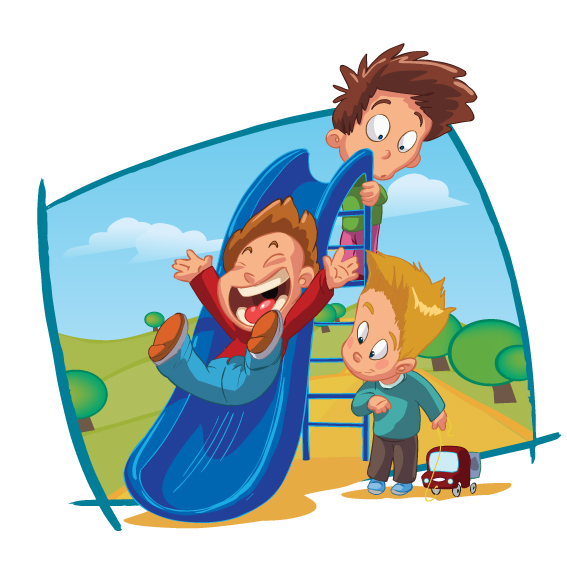Music and movement are truly essential parts of children's early years education. Let's take a moment to think about this!
Preparation for Starting Formal Education
Children need physical coordination and strength to be as successful as they can be in any learning environment. Why? They need to have good control of gross and fine motor skills in order to be able to learn to write effectively. They need to be comfortable sitting in a chair, which requires core strength and development of back and neck muscles. Eye strength is important for them to be able to focus on the teacher, on presentations and the whiteboard, as well as close-up, such as their own work.
Memory skills and sequencing are necessary for building logical structures of their ideas to put them to paper. These skills are also essential for reading.
Children also need their imagination and creativity nurutured to give them the confidence to express themselves and explore their learning journey.
Development of Spatial Sensitivity and Physical Strength
Dance and movement are great methods at any age to build strength and spatial sense. We develop better motor skills by focusing our awareness on our bodies; our position in space as well as our posture and position of our arms and legs. In the early years, children translate their spatial awareness of the physical world (their bodies, other children, their toys and games, and other things in their environment) to the ability to position and space letters and words.
Development of the larger muscles actually does have an impact on the fine motor skills, and weight-bearing movements such as crawling, jumping and hopping, help develop bone density.
Brain and Visual Development
The brain is an amazingly complex instrument, and we don't understand its functions fully, but we do know that the left side of the brain is used primarily in processing data and logical structures (reading the words on the page and connecting them to concrete meanings) while the right side of the brain "paints pictures", integrating these concrete meanings into more complete ideas of meaning including visual imagery. When we write, the left side is in charge of the physical control of creating the letters and words, while the right side exercises the creative impulse to decide what to write. Multi-sensory experience is necessary to activate the different parts of the brain together and develop a rich ability to understand and build ideas and expressions. Strength, dexterity and physical skill can be encouraged to develop with lots of fun activities for children such as hitting balloons back and forth or bouncing balls in a parachute. These kind of activities are great for developing awareness of objects moving unpredictably through space.
Play, Role Play, and Fun
Dance and music can also be an important part of a child's play experience. Role play and dress-up are ways children can explore their sense of self and interpersonal modes with the other children.
Dancing with scarves can be a great way to enhance the experience of moving and dancing and is even more visually engaging.
New Funky Feet Module: Pop Like Popcorn
The Early Years Shop is very excited to announce a new release in the award-winning Funky Feet series of music and movement programmes: Pop Like Popcorn. This wonderful 20-song CD and Music Manual is a fun way to get the children moving together. They'll love jigging like a pirate, partying with the dinosaurs, crawling like crabs and smiling like crocodiles!
If you purchase Pop Like Popcorn before Easter you can order any of the other Funky Feet programmes for 15% off! This is definitely the best time to purchase the complete set.




